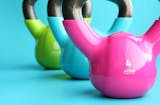 Building muscle mass is already a difficult task. But, can you imagine what would happen if all the anabolic processes were reversed and your hard-earned muscle tissue starts getting eaten away? This can become a tedious and demotivating experience.
Building muscle mass is already a difficult task. But, can you imagine what would happen if all the anabolic processes were reversed and your hard-earned muscle tissue starts getting eaten away? This can become a tedious and demotivating experience.
This state, where your body cannot beautifully and thoroughly grow, is called catabolism and should be avoided at all costs. It is not a difficult task, but some things must be taken into consideration if you want to prevent this debilitating process.
Contents
The biology behind catabolism
In the microscopic world, catabolism is a set of metabolic pathways that break down complex molecules (lipids, proteins, polysaccharides, nucleic acids, etc.) into simpler ones (fatty acids, amino acids, monosaccharides, nucleotides, etc). These can either oxidize to release energy or can be used in other anabolic reactions. In the world of fitness, when we translate this, it means that muscle tissue gets broken down to produce energy.
What else is a source of energy for our bodies? Body fat. If a decent amount of body fat is burned off from our body, there will be nothing left that can supply us with energy, except for our muscles.
How to remain in the anabolic state
The equation is rather simple. You have to eat more than you burn while working out. If you have extra calories, you will grow, however, if you lack enough calories, your body will shrink, regardless of your efforts at the gym. It’s just simple math.
First of all, avoid going 3 hours or more without eating. When you are trying to build muscle, sufficient nutrition is of the essential requirement. Distribute your daily meals evenly and space them about 2.5 to 3 hours apart. This will sum up to around 5-6 meals per day which will definitely give you adequate amounts of energy to fulfill your body’s needs. Just remember, complex carbs low on sugar and healthy unsaturated fats are a good dietary choice.

The next thing you have to avoid is over- training. Yes, everybody wants a lean, chiseled body overnight, but that should not prompt you to force the matter. Try to limit your workout sessions to about 45-60 minutes, including warm-up and stretching. Everything beyond that will activate a hormone from your adrenal glands known as cortisol. This hormone is what actually triggers the breakdown of muscle tissue for energy. It is a precursor for catabolism, so watch out!
Finally, a pre-workout meal will delay the onset of catabolism during your workout. Just toss a banana into your whey protein shake, get your hands on some fructose rich fruits, or mix powdered creatine with something sugary to create a sweet energy drink. Other than all that, when you finish your workout session, it is important to restore your energy and recover your muscles from the inflicted stress.
This is the only time when it is alright to consume high glycemic foods such as potatoes and white bread. But, the most important thing is to supply your body with enough protein and carbohydrates to trigger replenishment.
How to build muscle mass properly
Apart from ensuring an adequate nutritional base, the last step to avoid triggering the process of catabolism is correct training. Short, yet intense weight exercises are the recipe for releasing testosterone and growth hormones, which significantly influence the anabolic processes, or the state when your muscles can gain mass.
Training is what causes micro-cellular damage to your muscles. Thus, when healing commences, growth ensues. Also, bear in mind that exercises have to be changed on a regular basis because adaptation to different environments prompts your body to meet those changed needs while routine will ultimately lead to stagnation.
After warming up, try sticking to basic exercises that involve more joints in order to maximize the effect and the adaptation. The foundation is squats, bent barbell rowing, and bench presses, while barbell curls, shoulder presses, calf raises and triceps press-downs can follow. However, the key is to find a set of exercises that suit your goals and do not force the matter.
Stretching exercises are crucial after each workout because it helps remove lactic acid, enhance recovery and prevent injury after the body cools down. Also, never forget to rest because that is when your body can really develop and you can “reap what you have sown”.
Conclusion
Avoiding catabolism is not rocket science. It just takes a little research and implementation of the knowledge acquired in this matter. It is logical, so if it happens to you, prevention is just around the corner. Remember to eat more, feed yourself properly and evenly, do not force your stay at the gym, and allow your body enough time to recuperate. Diet is of the essence here, but so is tact. Get everything in order and watch your muscles grow!
![]()
About The Author
 Mathews McGarry is passionate about many forms of strength training and has spent years lifting, dragging, and flipping all manners of heavy objects. After graduating from the Faculty of Health Sciences, he started writing about his experiences, and sharing tips for better life. Follow him on Twitter.
Mathews McGarry is passionate about many forms of strength training and has spent years lifting, dragging, and flipping all manners of heavy objects. After graduating from the Faculty of Health Sciences, he started writing about his experiences, and sharing tips for better life. Follow him on Twitter.






Comments are off this post!